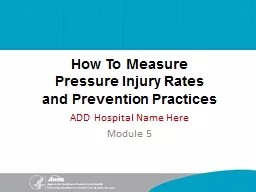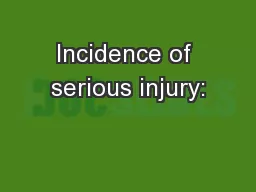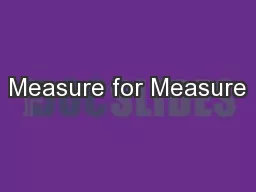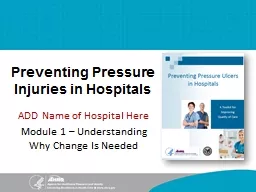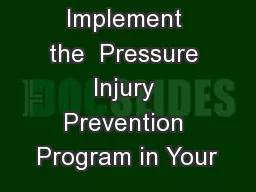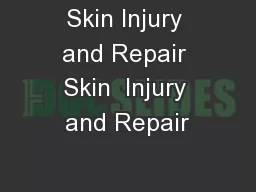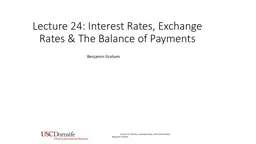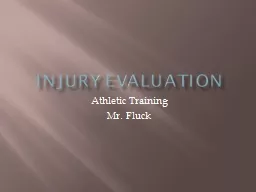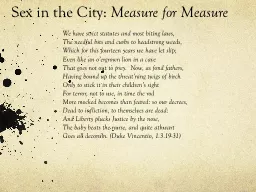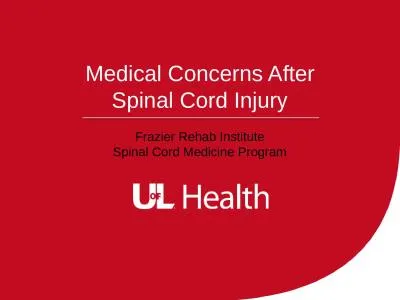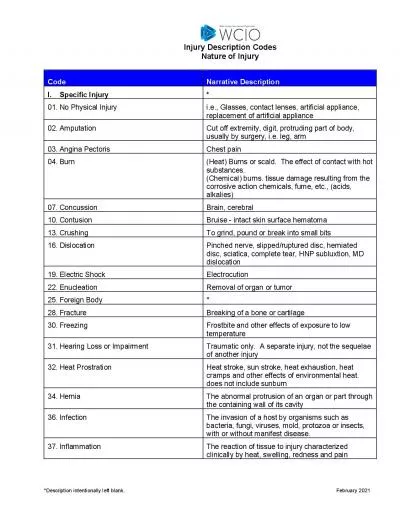PPT-How To Measure Pressure Injury Rates
Author : faustina-dinatale | Published Date : 2018-10-24
and Prevention Practices ADD Hospital Name Here Module 5 Basic Quality Improvement Principle If you cant measure it you cant improve it 2 Quality Improvement Principle
Presentation Embed Code
Download Presentation
Download Presentation The PPT/PDF document "How To Measure Pressure Injury Rates" is the property of its rightful owner. Permission is granted to download and print the materials on this website for personal, non-commercial use only, and to display it on your personal computer provided you do not modify the materials and that you retain all copyright notices contained in the materials. By downloading content from our website, you accept the terms of this agreement.
How To Measure Pressure Injury Rates: Transcript
and Prevention Practices ADD Hospital Name Here Module 5 Basic Quality Improvement Principle If you cant measure it you cant improve it 2 Quality Improvement Principle Pressure injury rates and prevention practices must be counted and tracked as one component of a quality improvement program. CIS Bangalore Paid Free Total Consumption Period in weeks 11 12 10 14 15 14 20 21 26 12 38 39 CIS Nagpur Nashik Aurangabad Jalgaon Kolhapur Goa Paid Free Total Consumption Period in weeks 10 17 18 15 11 26 27 25 20 45 46 CIS Hyderabad Vizag Paid A comparison of emergency hospital admissions for serious injury in Ireland, Northern Ireland, England, Scotland and Wales. Steve Barron, Institute of Public Health in Ireland. Jodie Hope, . Information Services Division, NHS National Services Scotland. Quantifying. . Metadata. . Quality. Werner Bailer . | . Europeana. AGM 2015. The Problem. Metadata. . from. . many. . sources. Heterogeneous. . formats. . (. and. . thus. . conversions. ). Different . in . Hospitals. ADD Name of Hospital Here. Module 1 – Understanding Why Change . Is . Needed. Ice Breaker. Describe an interesting fact about yourself.. 2. Compelling Reasons To Implement Program . Organization. ADD Hospital Name here. Module 4. What We Have Done Thus Far. Up to this point, you have:. Looked at your organization’s readiness to improve pressure injury prevention (Module 1).. Examined current practices and identified aspects needing improvement (Module 2).. By: Donna Pittenger, R.D. . Student population 73,000 . Free & Reduced 29% . Employees 588 . Budget $30, 479,638 . Schools 59. Four Stages in Skin Healing. Inflammation. Blood flow increases. Phagocytes attracted. Scab formation. Cell division and migration. Scar formation. Bleeding occurs at the site of injury immediately after the injury, and mast cells in the region trigger an inflammatory response.. Benjamin Graham. Lecture 12: Money, Exchange Rates, and Interest Rates Benjamin Graham. Housekeeping. New syllabus is posted. 3 Khan academy videos for Friday. Injury Evaluation Athletic Training Mr. Fluck The Step by Step Injury Evaluation Process Injury History Inspection and Observation Pain and Palpation Range of Motion Manual Muscle Testing Special Test Brian P . Rieger. , PhD. Chief Psychologist & Clinical Assistant Professor. Department of Physical Medicine & Rehabilitation. SUNY . Upstate. Medical University. Director, Upstate Concussion Center. . We have strict statutes and most biting laws,. The needful bits and curbs to headstrong weeds, . Which for this fourteen years we have let slip;. Even like an . o’ergrown. lion in a cave. Frazier Rehab Institute. Spinal Cord Medicine Program. Possible Medical Concerns. Skin . Issues/Pressure Ulcers. Autonomic . Dysreflexia. Orthostatic . Hypotension. Spasticity. Pain. Heterotopic . Ossification. What is it? Symptoms The symptoms are typically limited to the outer ear. A er an injury, there is pain and swelling in the outer ear. If this has occurred mul ple mes, the ear may appear deformed. *Description intentionally left blank.February 2021 Code Narrative Description I. Specific Injury * No Physical Injury i.e., Glasses, contact lenses, artificial appliance, replacement of artificial ap
Download Document
Here is the link to download the presentation.
"How To Measure Pressure Injury Rates"The content belongs to its owner. You may download and print it for personal use, without modification, and keep all copyright notices. By downloading, you agree to these terms.
Related Documents

